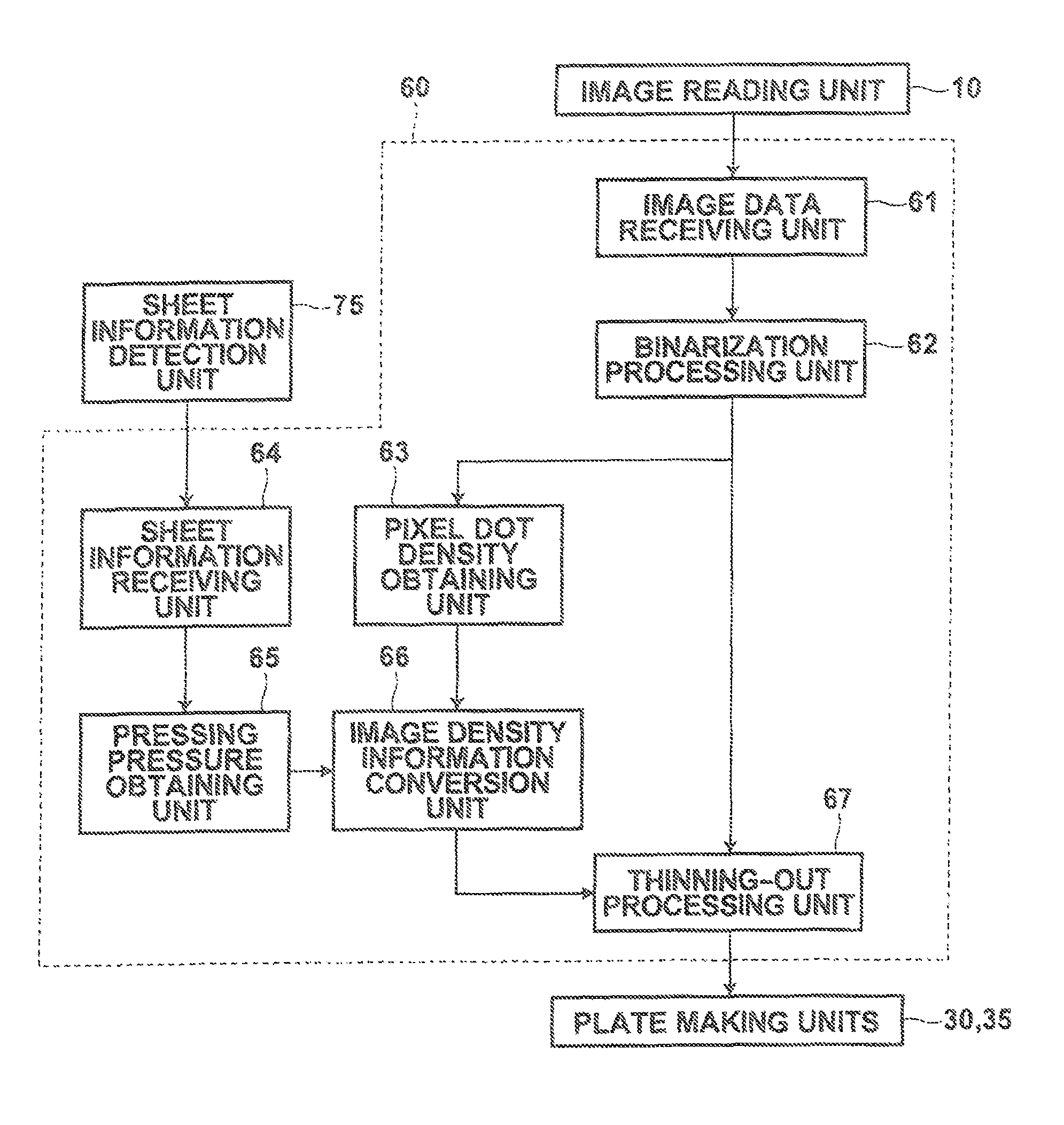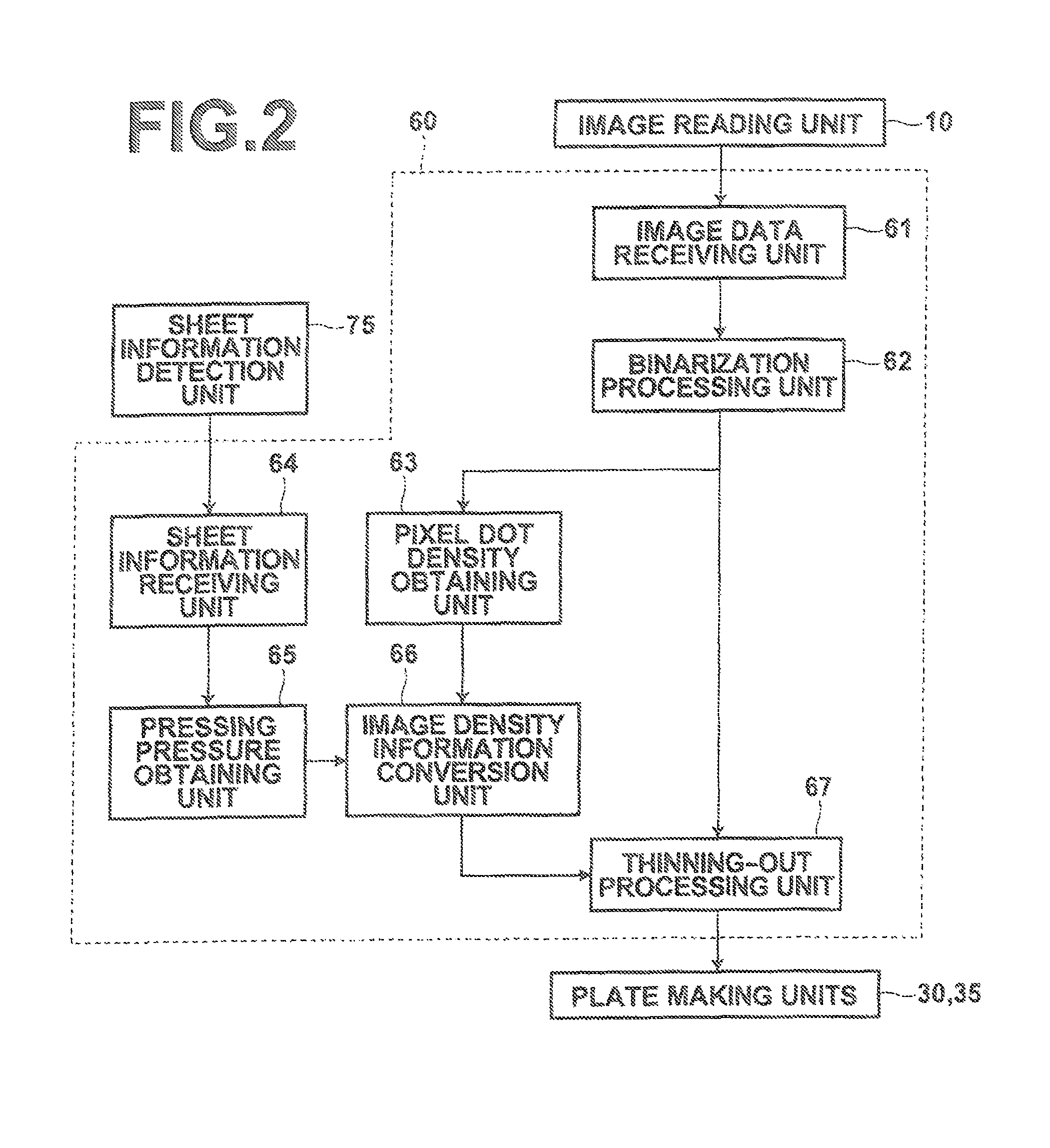Image data generation method and device, and stencil printing apparatus, with density conversion based on pressing pressure based on recording medium width or thickness
a stencil printing and image data technology, applied in the field of image data generation, can solve the problems of image quality degradation, density stability impairment, and print contamination, and achieve the effect of avoiding blurring of fine or small characters or lines, and reducing image quality
- Summary
- Abstract
- Description
- Claims
- Application Information
AI Technical Summary
Benefits of technology
Problems solved by technology
Method used
Image
Examples
first embodiment
[0037]Hereinafter, a stencil printing apparatus employing an image data generation device of the present invention will be described in detail with reference to the drawings. The stencil printing apparatus of this embodiment is characterized by a method for generating image data. First, the schematic structure of the stencil printing apparatus is described. FIG. 1 is a diagram illustrating the schematic entire structure of the stencil printing apparatus of this embodiment.
[0038]As shown in FIG. 1, the stencil printing apparatus 1 of this embodiment includes: an image reading unit 10, which reads an image of an original document and outputs image data; first and second plate making units 30 and 35, which apply plate making processing to a stencil master sheet M based on the image data read by the image reading unit 10; first and second printing units 40 and 50, which carry out printing on a printing sheet P1 using the stencil master sheets M subjected to plate making at the first and...
second embodiment
[0091]Therefore, the image data generating unit of the stencil printing apparatus of the second embodiment carries out image density conversion processing at the photographic picture area, where tone is important, based on the multivalued image data.
[0092]Specifically, as shown in FIG. 9, the image data generating unit 80 of the stencil printing apparatus of the second embodiment includes: an image data receiving unit 81, which receives an input of the image data outputted from the image reading unit 10; an average image density obtaining unit 88, which obtains an average image density value in the reference area, which is a part of the image data received by the image data receiving unit 81; an image density conversion processing unit 89, which obtains output image density of the multivalued image data in the reference area based on the pressing pressure value obtained by a pressing pressure obtaining unit 85 and the average image density value obtained by the average image density...
PUM
 Login to View More
Login to View More Abstract
Description
Claims
Application Information
 Login to View More
Login to View More - R&D
- Intellectual Property
- Life Sciences
- Materials
- Tech Scout
- Unparalleled Data Quality
- Higher Quality Content
- 60% Fewer Hallucinations
Browse by: Latest US Patents, China's latest patents, Technical Efficacy Thesaurus, Application Domain, Technology Topic, Popular Technical Reports.
© 2025 PatSnap. All rights reserved.Legal|Privacy policy|Modern Slavery Act Transparency Statement|Sitemap|About US| Contact US: help@patsnap.com



